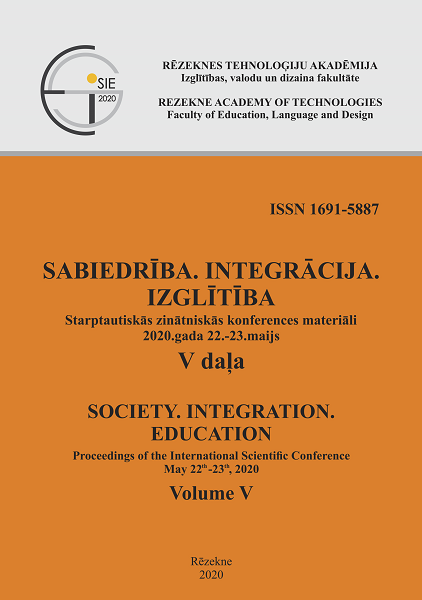ISLAMIC STYLE IN LANDSCAPE DESIGN ON THE EXAMPLE OF ANCIENT GARDENS OF THE TEMURID PERIOD
DOI:
https://doi.org/10.17770/sie2020vol5.4990Keywords:
Islamic garden, landscape design, Temurid period, chor-bog, Babur, terrace-shaped gardens, water, greenery, fountainsAbstract
The article considers the history of the creation and development of the Islamic garden, the characteristic features of landscape gardening art in the Islamic style through the prism of the development of ancient gardens of the Temurid period, in particular, on examples of gardens in Central Asia, Afghanistan and India, and other countries, including their perspectives development, as well as proposals for the creation of modern landscape design. Today, with the urbanization and the growth of cities, less territory remains for the green zone, therefore one of the main problems throughout the world is the preservation of the environment, and especially landscape architecture. Gardening art has come a long way and many masterpieces have been irretrievably lost. Today, all aspects of the history and development of Islamic-style gardens and parks are still not disclosed. For this reason the issue of studying traditional Islamic-style gardens and, of course, reviving the traditional park-building culture of the Temurids and Baburids era was raised in Uzbekistan to create a green environment of historical sites and national parks. As a result of the research, the following were considered and identified: the history of the development of Islamic landscape design, the types of gardens in the Islamic style, the history of the creation of various gardens, their names, planning and compositional solutions, characteristic features, decorative techniques for building gardens in Central Asia, Afghanistan, India, technical and water devices used in the Temurid Gardens, as well as the importance of the Temurids dynasty in creating gardens and parks in Afghanistan and India. The conducted research, the experience of designing and creating Islamic gardens in Central Asia, Afghanistan, India and other countries will allow using the recommendations aimed at creating a modern garden in the Islamic style not only in Uzbekistan, but in other countries.
References
Bennett, A. (1999). Subcultures or Neo-tribes? Rethinking the Relationship Between Youth, Style and Musical Taste. Sociology, 33, 599-617. DOI: 10.1177/S0038038599000371
Boluža, I. (2013). Is Graffiti Art a Crime or a Protest of the Society against Law Enforcement. In Public Security Studies. (69-73). vol.2.
Bordijārs, Ž. (2000). Simulācija un simulakri. Rīga: Omnia mea.
Bourdieu, P. (1991). Language and Symbolic Power. Retrieved from monoskop.org/images/4/43/Bourdieu_Pierre_Language_and_Symbolic_Power_1991.pdf
Colebrook, C. (2004). Irony. New York: Routledge.
Cultural Crossroads, Vol. 13. (2019). Riga: LKU.
Derrida, J. (1997). Of Grammatology. Baltimore: John Hopkins University Press.
Hebdige, D. (1998). Subculture: the Meaning of Style. London: Routledge.
Jewitt, C. & Oyama, R. (2004). Visual Meaning: A Social Semiotic Approach. In: Van Leewen, T. and C.Jewitt, The Handbook of Visual Analysis. London: Sage.
Jordan, T. (2002). Activism! London: Foci.
Kozlovs, N. (2004). Artist’s Role in the Local Context: Latvian Case. In S. Krese (Ed.), Artists as Producers. Transformation of Public Space. (5-8). Riga: LMC.
Kozlovs, N. (2005). Transformation of Public Space; Artist’s Role. In R.Šmite (Ed.), Reader on Mixed Reality “Space and Perception” (66-71). Riga: RIXC.
Kress, G., & Van Leewen, T. (1996). Reading images. New York: Routledge.
Lannert, C. (2015). The Perpetuation of Graffiti Art Subculture. In Butler Journal of Undergraduate Research. (47-66). Vol. 1. Retrieved from https://digitalcommons.butler.edu/bjur/vol1/iss1/5
Lefebvre, A. (2015). Proizvodstvo prostranstva. Moskva: Strelka press.
Markoff, J. (2005). What the Dormouse Said: How the Sixties Counterculture Shaped the Personal Computer Industry. New York: Penguin.
Routledge, P. (1997). The Imagineering of Resistance: Pollok Free State and the Practice of Postmodern Politics. In Transactions of the Institute of British Geographers. (359-376). Vol.3
Toro, H. D. (2004). Voldena jeb Dzīve mežā. Rīga: Zvaigzne ABC.
Turchine, V. (1993). Po labirintam avangarda. Moscow: MGU.
Turner, F. (2006). From Counterculture to Cyberculture. Chicago: University of Chicago
Velikonja, M. (2019). Post-Socialist Political Graffiti in the Balkans and Central Europe. London: Routledge.
Voloshinov, V. (1930). Marksizm i filosofija jazyka. Retrieved from http://www2.unil.ch/slav/ling/textes/VOLOSHINOV-29/I-1.html#1






